Traveller information systems are becoming an important part of managing road safety and although they may be used as single installation sites, they are nowadays an important part of an overall Intelligent Traffic System - ITS. Those systems are used to acquire and present information to assist the travellers while completing their journey. Based on the requirements, those systems can work entirely autonomously within the vehicle or it can also use the data supplied by the traffic management authority or the responsible road operator.
The information provided by the system may include, but it is not limited to:
- Location of incidents on the route;
- Weather and road conditions on the route;
- Optimal route based on the traffic on the selected route;
- Recommended speed based on the current weather or traffic conditions;
- Lane restrictions based on the weather, traffic and incident conditions;
The delivery of the above mentioned information can be done via different communications channels based on the implemented solution and customer requirements, but generally those can be:
- Television;
- Radio and highway radio;
- SMS broadcasting;
- In-vehicle information systems;
- Digital variable-message sings installed along the route;
- Mobile applications;
- Other communication means;























